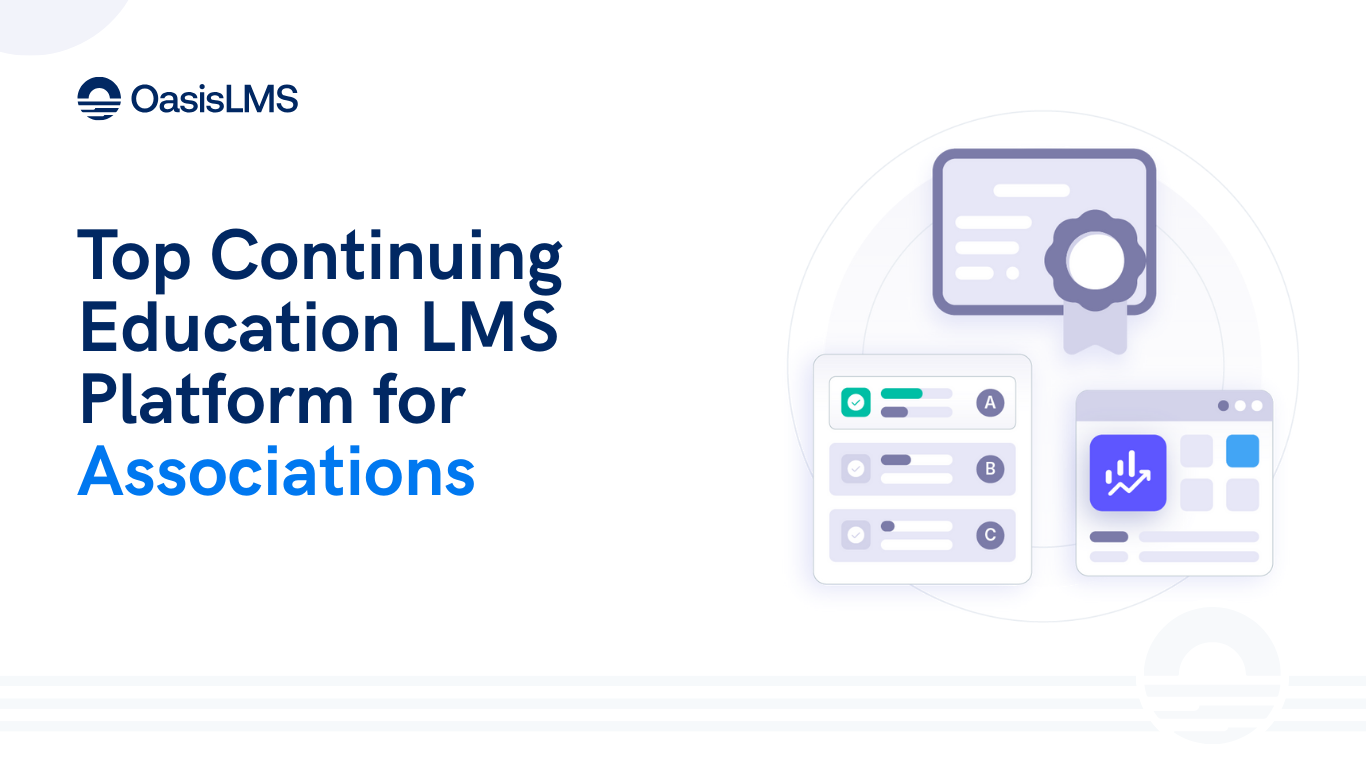
Continuing education is not just a side offering for organizations. If done right, it is a strategic pillar for associations, healthcare systems, nonprofits, and education providers. Since professionals across industries need to maintain licensures, advance their careers, and meet compliance requirements, it is imperative that organizations must deliver learning that is flexible, scalable, and impactful.
Enter the continuing education LMS.
These LMS are built from the ground up with continuing education in mind. They don’t focus on university LMS functionality or training corporate employees. But with so many LMS vendors how do you know which platform is right for your CE program?
In the below guide, we’ll define what makes a great CE LMS, explore what features to look for, and compare leading platforms for 2025.Whether you're launching a new program or upgrading an outdated system, this resource will help you choose the right partner.
A continuing education LMS is a platform designed specifically for learners looking to earn any sort of continuing education credits. Unlike traditional academic LMSs, these platforms are engineered to support compliance, certificate issuance, credit tracking, e-commerce and scalability.
A CE LMS is vertical agnostic. It can support physicians earning CME credits to engineers finishing PDH hours to HR professionals renewing their SHRM certifications.
A CE LMS is the central hub for an organization offering, selling and distribution courses with continuing education. It enables organizations to:
A great LMS partner does not just deliver learning. It can increase learn engagement, revenue and ultimately your brand.
Most LMS platforms are not built with continuing education in mind. Here are the features that matter most for CE providers:
Search for an LMS that automatically grants certificates and/or CE based upon certain completion criteria. Support for multiple credit types (CME, CEU, CPE, PDH) is essential if you serve diverse audiences.
Many CE activities don’t align to full-hour increments. Choose a platform that allows incremental credit claiming and the ability to assign more than one credit types (e.g., CME for physicians, CNE for nurses)from a single course.
CE delivery isn’t one-size-fits-all. Top platforms support:
Continuing education is often a major revenue stream. Look for features like:
A strong CE LMS should let you build a sustainable, scalable business model.
If you serve multiple hospitals, chapters, or corporate clients, choose an LMS that supports organization-level access and administration. This allows clients to:
This is especially critical in healthcare and enterprise CE delivery.
Automate reporting to systems like:
This significantly can reduce staff workload and ensure all reporting data is accurate
CE often includes high-stakes assessments. Look for:
You will need to be able to track learner progress, course performance, and credit completion at a quick glance. Key integrations to look for:
Oasis LMS was purpose-built for continuing education. It’s used by leading associations and healthcare systems to deliver compliant, scalable CE programs.
Why it stands out:
Whether you're scaling a revenue-generating CE program or streamlining internal CME, Oasis LMS adapts to your needs.
BeaconLive combines live virtual events with an LMS backend, making it ideal for organizations that prioritize real-time education. It includes robust certificate automation and works well for legal, financial, and healthcare education providers.
Highlights:
Blue Sky’s Path LMS is a long-time favorite among associations. It supports on-demand and live content, offers strong reporting, and integrates well with AMS platforms.
Highlights:
EthosCE, now part of Cadmium, is tailored to the healthcare market. It supports complex CME requirements and deep integration with accreditation bodies like ACCME.
Highlights:
Destiny One is ideal for colleges and universities running CE programs for working professionals. It includes robust eCommerce, learner portals, and integration with SIS platforms.
Best for:
Learn at Pinnacle delivers free CE via its mobile app, offering a mix of clinical and non-clinical content for healthcare professionals. Pinnacle also partners with healthcare organizations to feature their content on the platform and manage the full CME/CE accreditation process.
Highlights:
Choosing a CE LMS is about more than ticking feature boxes. Here’s how to approach it strategically:
Clarify what types of credit you offer and who your target market is. This determines your compliance needs, course structure, and delivery methods.
Will you sell courses or are they free? Offer member-only content? Host live events? Make sure your LMS supports monetization, learner access rules, and marketing tools.
Avoid making data silos. Look for platforms that integrate with your CRM, AMS, webinar platforms, and payment gateway or any other relevant tools your team uses.
You need a no-code environment. Ask for a demo and test the admin interface thoroughly.
If you plan to serve corporate clients, offer group sales, or expand into subscription models, ensure the LMS can handle this and that its pricing model is scalable.
Continuing education is not static—it evolves with technology, regulation, and learner expectations. Your LMS should do the same.
Oasis LMS stands out as a modern, flexible platform that empowers associations, healthcare providers, and education teams to scale their CE programs with confidence. From partial credit tracking to full ecommerce capabilities to support for organizational learners, it’s built to handle the real-world demands of continuing education.
Ready to simplify compliance, grow revenue, and streamline your CE operations? https://oasis-lms.com/book-a-demo today.
Whether managing CME for physicians or supporting member growth, Oasis LMS helps deliver high-impact education efficiently and at scale.
